Giraffes are the tallest terrestrial animals on Earth, growing up to 18 feet tall. They inhabit savannas and woodlands in sub-Saharan Africa and have unique physical characteristics that enable them to survive in their environment. Despite their towering height, giraffes face numerous threats from predators.
Understanding the natural predators of giraffes is crucial for conservation efforts and can help prevent further population decline.
In this article, we will explore the different types of predators that pose a threat to giraffes in their native habitat, including lions, hyenas, crocodiles, and human activities such as poaching.
Additionally, we will examine how these predators interact with each other and how they impact the survival of giraffe populations in Africa.
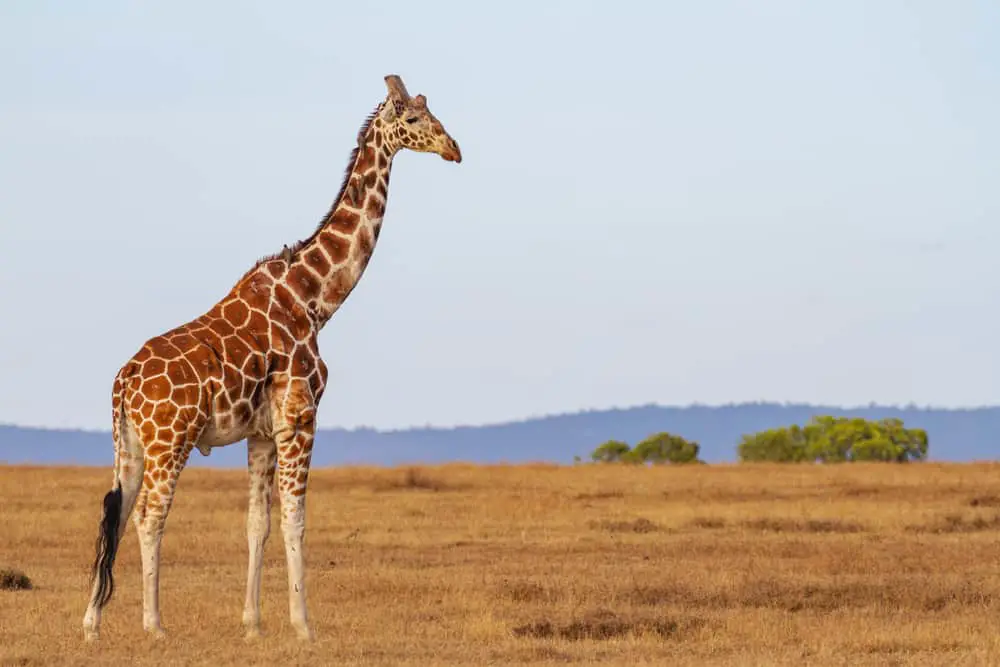
Giraffes’ Unique Adaptations For Survival
Giraffes’ unique adaptations have allowed them to thrive in their natural habitats despite being one of the tallest animals on Earth.
Their long necks, which can reach up to 6 feet (1.8 meters), allow them to browse for food without having to compete with other herbivores at lower levels. This adaptation also enables giraffes to spot predators from a great distance and flee before they get too close.
Furthermore, their height provides better ventilation and cooling in hot climates.
Survival strategies adopted by giraffes include their ability to run at high speeds up to 37 miles per hour (60 kilometers per hour). They use this skill when escaping from predators like lions, hyenas, leopards or wild dogs that are known for attacking adult giraffes as well as newborn calves.
Giraffes’ powerful kicks are another defense mechanism against predators who try to approach them from behind. Lastly, they have an excellent sense of hearing and eyesight; they can hear noises from far away and see potential dangers even at night due to their large eyes and acute vision. These traits make them formidable prey for any predator looking for an easy meal in the savannahs of Africa where they reside.
How Big Are Giraffes: Unveiling the Height of Graceful Giants
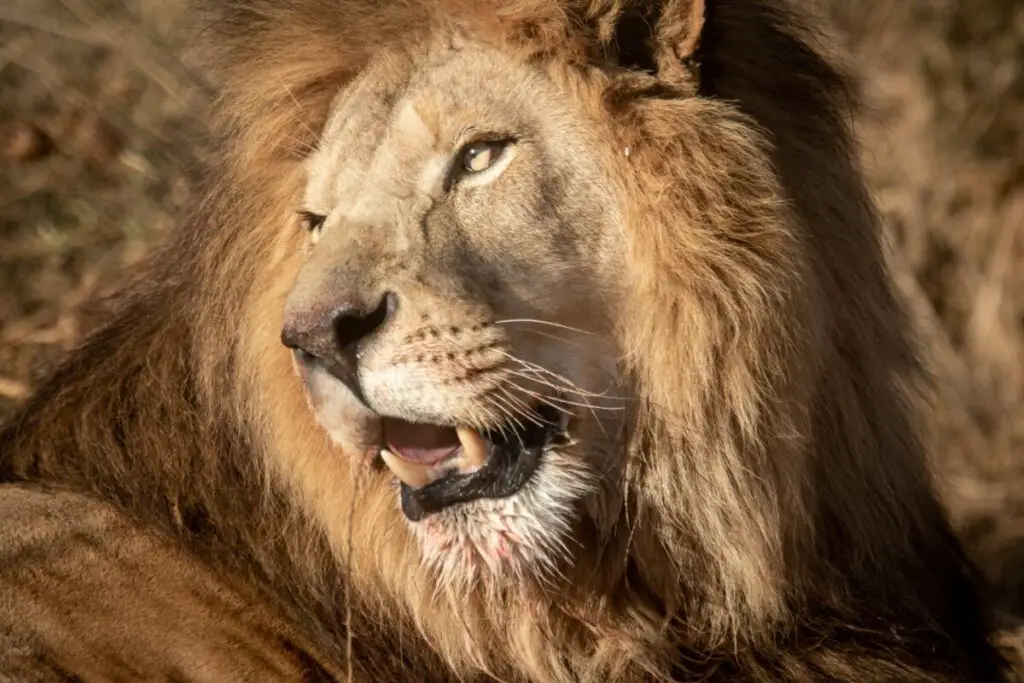
Lions
Giraffes are known to be a favorite prey item of lions, as they provide a substantial amount of meat that can sustain whole prides for several days.
Lions have developed various hunting strategies when it comes to preying on giraffes.
One such strategy involves stalking their prey while remaining hidden behind vegetation until they get close enough for an ambush attack.
Another tactic used by lions is to chase down giraffes in open spaces or even launch surprise attacks from nearby bushes.
Despite their size advantage over lions, giraffes remain vulnerable due to their slower running speed and difficulty maneuvering through thickets during pursuit.
These interactions between giraffes and lions underscore the delicate balance that exists within ecosystems and remind us of the constant struggle for survival among different species.
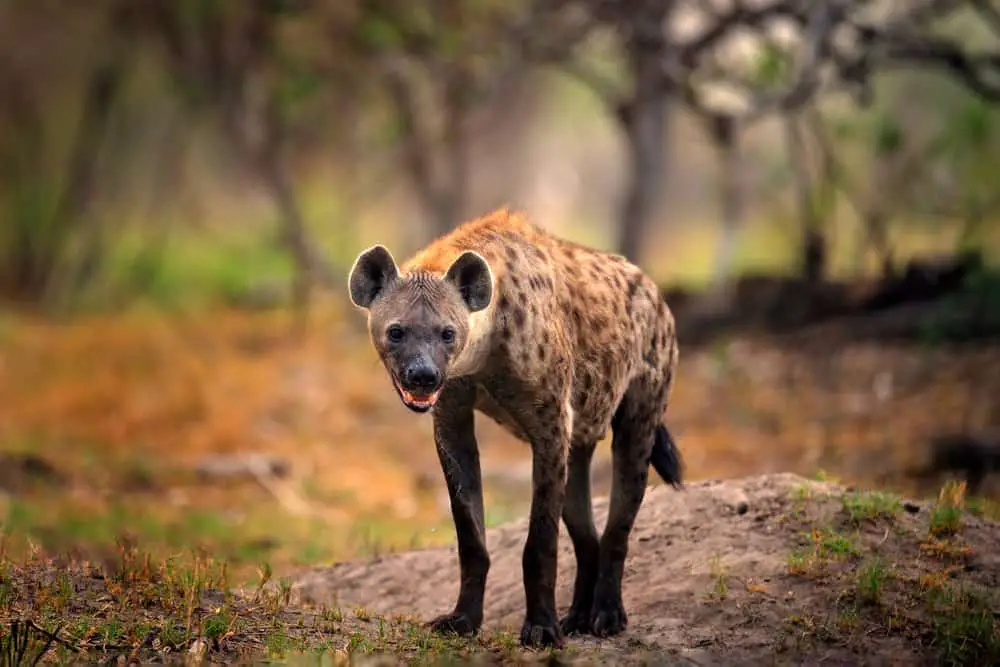
Hyenas
Lions are not the only predators that giraffes have to worry about. Hyenas, for example, also prey on these long-necked animals.
However, despite their reputation as scavengers, hyenas are actually skilled hunters and can take down even large prey like adult giraffes.
Hyenas typically hunt in packs and use a variety of techniques to bring down their target. One common strategy is to chase and harass an animal until it becomes exhausted, making it easier to catch.
They may also work together to distract and confuse their prey or attack from different angles at once. Once a giraffe is brought down by hyenas, they will quickly consume as much of the carcass as possible before other predators arrive on the scene.
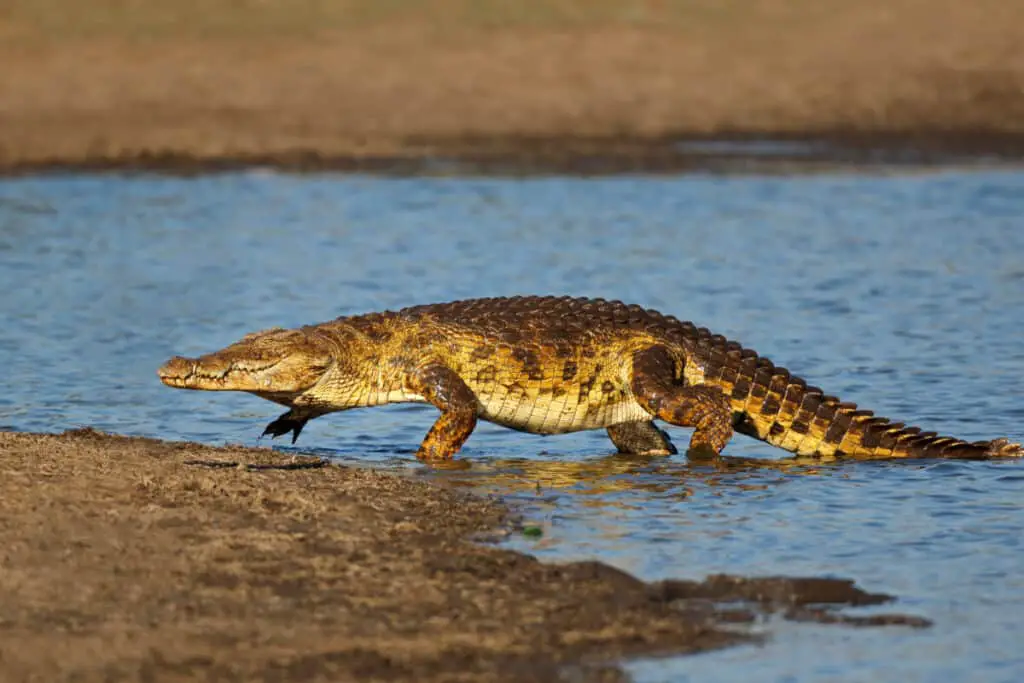
Crocodiles
While giraffes are known to be the tallest animals on land, they do not have any natural predators.
However, their vulnerability increases when they approach water sources where crocodiles reside.
Crocodiles are ambush predators and possess remarkable adaptations for swimming, which makes them a formidable threat to prey species like giraffes.
Crocodile hunting tactics involve waiting patiently under the surface of the water until an unsuspecting animal comes close enough to strike.
Their eyes and nostrils are located at the top of their head, allowing them to remain almost completely submerged while still being able to see and breathe.
Once within striking distance, crocodiles use their powerful jaws and sharp teeth to grab hold of their prey before dragging it underwater.
Giraffes that venture into rivers or lakes risk falling victim to these deadly predators due to their inability to swim well and defend themselves against such attacks.
Human Activities And Poaching
The giraffe, despite its towering height and powerful legs, has several natural predators in the African savannah. These include lions, hyenas, leopards, and crocodiles which are known to prey on young or weakened individuals.
However, the main threat facing giraffes today is not from these predators but rather from human activities such as habitat loss and poaching. Habitat loss due to land degradation caused by overgrazing and deforestation has resulted in a decline of suitable habitats for giraffes. This limits their access to food sources leading to malnutrition and increased susceptibility to disease and predation.
Additionally, hunting for meat and trophy has contributed significantly to a reduction in giraffe populations across Africa. To mitigate this problem, effective anti-poaching strategies should be implemented that involve community-based conservation programs aimed at raising awareness among local communities about the importance of protecting wildlife habitats while empowering them economically through alternative livelihoods.
By doing so, we can ensure that future generations will continue to enjoy the sight of these majestic creatures roaming free in their natural habitats without fear of extinction.
Giraffe Lifecycle: From Calf to Towering Adult
Interactions Between Giraffes And Predators
Giraffes are known to have few natural predators due to their large size and height. However, they can still fall prey to carnivores such as lions, hyenas, leopards, and wild dogs who hunt in packs. These predators usually target young giraffes or those that are sick or injured.
Additionally, adult giraffes may also be attacked if isolated from the rest of the herd. Giraffes’ behavioral defense mechanisms against predators include their ability to run at high speeds of up to 56 kilometers per hour and use their long legs to deliver powerful kicks. They also have keen eyesight and can detect danger from far away.
When threatened, giraffes may stand tall and stare down their predator or break into a gallop while making loud snorting sounds. Some researchers suggest that giraffes’ unique spotted coat pattern may help them blend in with trees and bushes in their habitat, providing camouflage against predators.
Despite these defenses, however, giraffes remain vulnerable to predation by some of Africa’s most formidable carnivores.
Giraffe Lifecycle: From Calf to Towering Adult
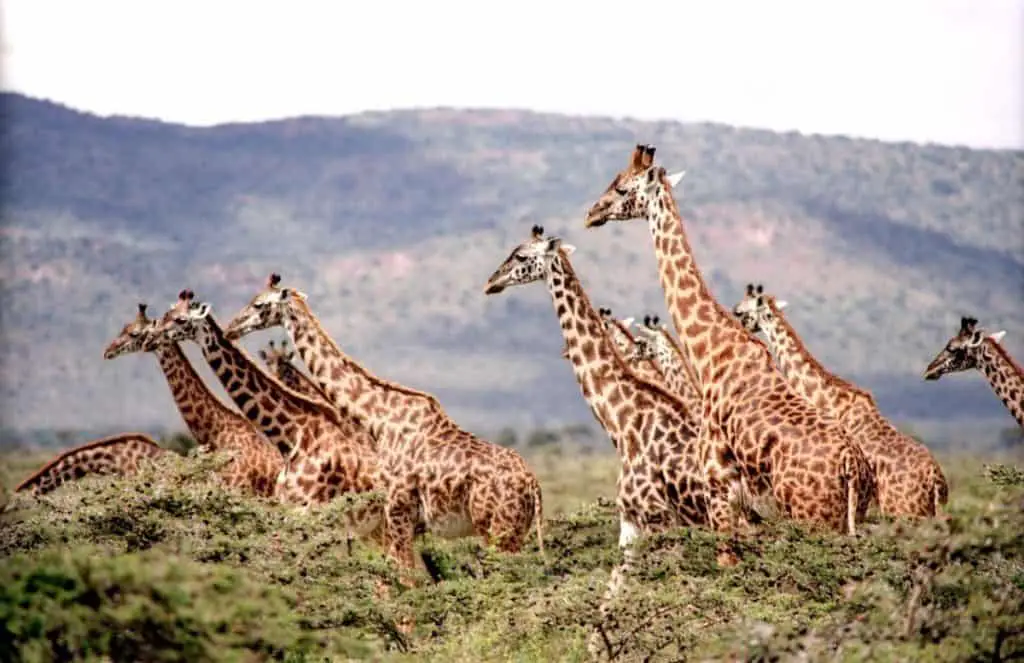
Conservation Efforts To Protect Giraffes
Interactions between Giraffes and Predators have been a subject of interest among researchers, as these interactions play an essential role in the survival of giraffes.
Giraffes do not have many natural predators due to their height, but they are still vulnerable to some of them. Lions, hyenas, and crocodiles are known to prey on young or weak giraffes. Additionally, humans pose a significant threat to giraffe populations through habitat loss and hunting activities.
Conservation efforts to protect giraffes have become increasingly crucial as their population continues to decline rapidly.
Community involvement is one critical aspect that can contribute significantly to the conservation of giraffes. By educating local communities about the importance of protecting wildlife habitats and promoting sustainable tourism, individuals can take ownership of preserving their environment’s biodiversity.
Moreover, government policies also play a vital role in conserving giraffe populations by implementing laws against poaching and illegal hunting practices.
Through joint efforts from both the community and government sectors, we can help ensure the long-term survival of these magnificent creatures for future generations to enjoy.
Giraffe Lifecycle: From Calf to Towering Beauty
Conclusion
Giraffes are impressive animals that have unique adaptations to survive in their environment. Despite their size and height advantage, they still face threats from predators such as lions, hyenas, and crocodiles.
Human activities like poaching also pose significant dangers to giraffe populations. Interactions between giraffes and predators can be complex, with instances of both successful hunting and failed attempts.
To protect these creatures, conservation efforts are underway, including habitat restoration projects and anti-poaching campaigns. It is crucial to continue educating the public about the importance of protecting giraffes and taking action towards preserving their existence for future generations.
By working together, we can ensure the survival of this majestic species.

